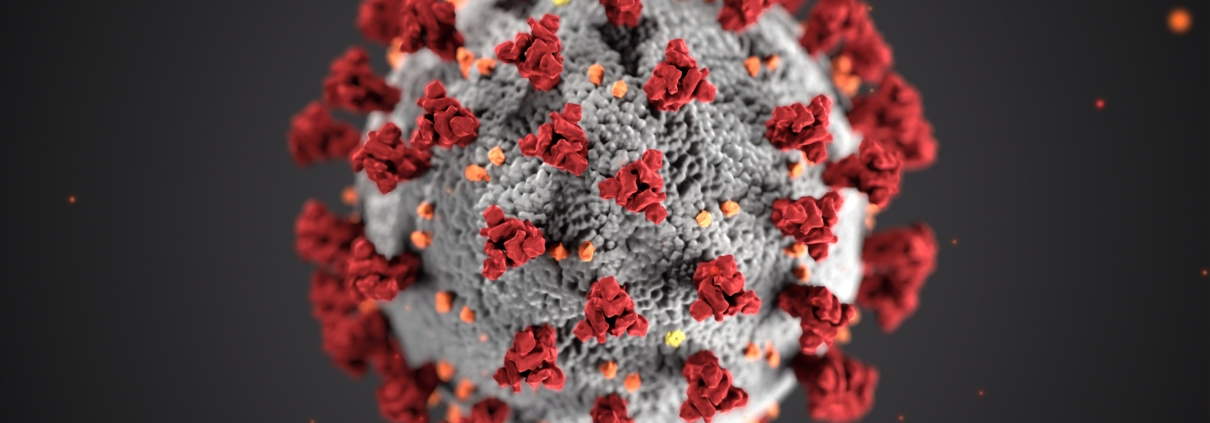UPDATED: The link between COVID-19 mortality and air pollution
Back in May, Breeze Technologies published an article outlining the preliminary findings linking higher COVID-19 mortality and air pollution. In this article we highlighted the limitations of the then-current research, as correlation does not necessarily equate to causation. It’s been more than half a year since. Read on to find out if things have changed.
Confirmed results of research
To reiterate from our last article, it is theorized that chronic respiratory stress resulting from long-term exposure to poor air quality affects the body’s ability to fend off respiratory infections. This is due to pollutants such as particulate matter (PM) and nitrogen dioxide (NO2) inflaming and damaging lung lining over time. Previous research found that SARS patients from moderately polluted areas in China had an 84% increased risk of dying compared to those from regions with low air pollution, while patients from highly polluted areas were twice as likely to die. This has led to studies investigating whether there is a link between COVID-19 cases and air pollution with the spread of the virus across the globe. The following discoveries we covered in May have since been published in scientific journals:
- Long-term exposure to NO2 contributes to COVID-19 fatality in a study based on cases from Italy, Spain, France, and Germany (Science of The Total Environment)
- There are positive associations between short-term exposure to carbon monoxide, nitrogen dioxide, ozone, and particulate matter but a negative association with sulphur dioxide with COVID-19 cases in China (Science of The Total Environment)
- An increase of 1 μg/m3 in PM2.5 pollution is associated with an adjusted 11% rather than the original 15% increase in COVID-19 mortality rate in the United States (Science Advances)
- COVID-19 has been detected on particulate matter in Italy, making air pollution a possible carrier for the virus (Environmental Research)
The following discovery remains yet to be peer-reviewed:
- An increase of 10 μg/m3 in NO2 and PM2.5 has been associated with a 22% and 15% increase in COVID-19 cases and a 19% and 9.6% increase in severe infection in China
Results of new research
In light of these new developments, new studies are being conducted in hopes of identifying a clear, causal relationship between COVID-19 and air pollution. Current research show the following:
- Particulate matter pollution contributed to 15% of worldwide COVID-19 mortality: 27% in East Asia, 19% in Europe, and 17% in North America (Cardiovascular Research)
- A 1 mg/m3 increase in the long-term average of nitrogen oxides and dioxide levels are associated with a 1.5% and 2.5% increase in COVID-19 mortality, and an increase of 1 m3 in the long-term average of PM2.5 pollution is associated with a 12% increase in COVID-19 cases in England (Environmental Pollution)
- A decrease of 1 μg/m3 in PM2.5 pollution is associated with a 2% decrease in new COVID-19 cases and a 3-5% decrease in COVID-19 mortality in the United States (working paper)
It’s time to take action
The evidence is strong enough to warrant immediate action. Even the World Health Organization (WHO) released a video on the impact of air pollution on COVID-19 cases, stressing the importance of interventions for cleaner air. Whether it be individual actions or government initiatives, we can all do our part.
Here is what you can do today to pick up the fight against COVID-19:
- Monitor and manage air quality at your workplace: COVID-19 is a respiratory illness, spread primarily through saliva droplets and nasal discharge from sneezing or coughing. To minimize spread risk, we at Breeze Technologies adapted our indoor air quality management solutions to help reduce COVID-19 risk at the workplace. These include sensors that provide information on real-time air quality values, as well as notifications on when to ventilate based on governmental recommendations and updated worker protection regulations.
- Leverage urban air quality data to protect your citizens: At Breeze Technologies, we develop and deploy urban sensor networks. By identifying the main sources of outdoor air pollution, cities can implement policies known to improve air quality, which in turn will help with COVID-19 cases and citizen health.
Contact us today for more information, and let us strive for a better, healthier tomorrow.


 Nordic Smart City Challenge
Nordic Smart City Challenge